Clearly communicate your concerns and the features you want to change to your surgeon.
Rhinoplasty is a surgical procedure performed to change the shape of the nose or improve its function. It can be performed to correct medical conditions such as breathing problems related to the nose, or to correct deformities caused by trauma or congenital defects.
It can also be performed for aesthetic reasons to change the shape and appearance of the nose.

The Decision-Making Process for Rhinoplasty
If you are considering rhinoplasty, you should first discuss your expectations with a specialist surgeon. Clearly explain to your surgeon any issues you have with your nose and what kind of change you would like to see.
Your surgeon will evaluate the structure of your nose and other facial features. Based on this evaluation, they can tell you how realistic your expectations are.
Your surgeon will also take your general health into consideration and explain the risks, recovery process and costs of the surgery in detail.
Step-by-Step Nose Aesthetics
Rhinoplasty is usually performed on an outpatient basis, so you will not need to stay in the hospital. General or local anaesthesia may be used. With general anaesthesia, you will be completely asleep during the operation. With local anaesthesia, your nose will be numbed so that you can relax and the procedure can be performed without you feeling any pain.
In closed rhinoplasty, the surgeon makes incisions inside the nostrils. He then reshapes the bones and cartilage of the nose to achieve a more aesthetic appearance. The procedure is completed with internal sutures, splints to aid breathing, and a protective bandage placed over the nose. Your nose will heal within a few weeks, but the full healing process can take up to two years.
Rhinoplasty Results and Revision Rhinoplasty
One of the most important goals of rhinoplasty is patient satisfaction with their new nose shape. If patients are dissatisfied with their new nose for any reason, revision surgery is recommended. Revision surgery is generally recommended to be performed by the original surgeon.
Sometimes, only minor adjustments are necessary for revision rhinoplasty.









